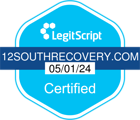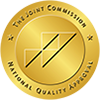Substance abuse is a widespread issue that affects millions of people worldwide. From alcohol to illicit drugs, misuse of substances can lead to devastating consequences for individuals and their loved ones. Raising awareness of the different types of substance abuse is the first step in addressing this problem. Knowing the types of substances commonly abused and their effects helps individuals, families, and communities recognize the signs of abuse. It also encourages early intervention, preventing further harm.

Alcohol Abuse
Alcohol is one of the most commonly abused substances in the world. While many people consume alcohol socially, its overuse can lead to a range of health and social problems.
What Is Alcohol Abuse?
Alcohol abuse occurs when someone drinks excessively, often to the point of intoxication, leading to impaired judgment, risky behavior, and long-term health complications. This form of substance abuse is particularly dangerous because it is often socially accepted, making it easier for individuals to slip into harmful patterns without realizing it.
Signs of Alcohol Abuse:
- Drinking more than intended or being unable to cut back
- Neglecting responsibilities at work, home, or school
- Experiencing memory blackouts or difficulty recalling events
- Developing tolerance, needing to drink more to achieve the same effect
- Suffering from withdrawal symptoms such as shakiness, anxiety, or nausea when not drinking
The Consequences of Alcohol Abuse:
Chronic alcohol abuse can lead to liver disease, cardiovascular problems, and mental health disorders like depression and anxiety. Additionally, it increases the risk of accidents, violence, and legal issues.
Prescription Drug Abuse
Prescription drugs, particularly opioids, sedatives, and stimulants, are frequently misused. While these medications are prescribed for legitimate medical reasons, their misuse can lead to addiction and severe health complications.
What Is Prescription Drug Abuse?
Prescription drug abuse involves taking medication in a way not intended by the prescribing doctor. This includes taking higher doses, using someone else’s prescription, or using the drugs for non-medical purposes to experience a high.
Commonly Abused Prescription Drugs:
- Opioids: Prescribed for pain relief, opioids like oxycodone, hydrocodone, and fentanyl can lead to addiction even when used as prescribed.
- Sedatives: Medications like benzodiazepines (e.g., Xanax and Valium) are used to treat anxiety but are often abused for their calming effects.
- Stimulants: Drugs like Adderall and Ritalin, typically prescribed for ADHD, are sometimes misused for their stimulating effects, especially by students seeking improved concentration.
Dangers of Prescription Drug Abuse:
The misuse of prescription drugs can result in overdose, dependency, and withdrawal symptoms. Long-term abuse can lead to changes in brain chemistry, increasing the risk of addiction and complicating recovery.
Illicit Drug Abuse
Illicit drug abuse refers to the use of illegal substances, such as cocaine, heroin, methamphetamines, and marijuana. These drugs are often associated with high rates of addiction, physical harm, and legal trouble.
Common Illicit Drugs and Their Effects:
- Cocaine: A powerful stimulant that increases energy, alertness, and feelings of euphoria. Long-term use can cause heart problems, paranoia, and severe mental health issues.
- Heroin: A highly addictive opioid that creates intense feelings of pleasure and relaxation. It is often injected, which increases the risk of infections and overdose.
- Methamphetamine (Meth): Known for its powerful stimulant effects, meth can lead to severe physical and psychological issues, including extreme weight loss, dental problems (“meth mouth”), and violent behavior.
- Marijuana: Although increasingly legalized, marijuana abuse can lead to dependency and mental health issues, such as anxiety and depression, particularly in heavy, long-term users.
Consequences of Illicit Drug Abuse:
Using illegal drugs exposes individuals to numerous risks, including overdose, infectious diseases (through shared needles), and significant legal penalties. The social and financial costs of illicit drug abuse are also substantial.
Inhalant Abuse
Inhalant abuse, also known as “huffing,” involves inhaling chemical vapors to achieve a mind-altering effect. Common household items like glue, paint thinners, and cleaning products are often used for this purpose.
What Is Inhalant Abuse?
This type of substance abuse involves breathing in toxic substances to experience short-lived but intense euphoria. Inhalants are dangerous because they are easily accessible and inexpensive, making them popular among younger individuals.
Effects of Inhalants:
Inhalant abuse can cause immediate damage to the heart, lungs, brain, and other organs. Chronic use leads to memory problems, learning disabilities, and irreversible damage to the nervous system.
Risks Associated with Inhalant Abuse:
The most significant risk is “sudden sniffing death,” where the heart stops abruptly after inhalant use. Even a single instance of huffing can be fatal, making this form of substance abuse particularly dangerous.
Contact Our Team
Substance abuse can have devastating effects on health, relationships, and overall quality of life. However, there is hope. At 12 South Recovery in Lake Forest, CA, we provide personalized addiction treatment programs to help individuals overcome substance abuse and achieve long-lasting recovery. If you or someone you know is struggling with substance abuse, don’t hesitate to reach out. Contact us today to learn more about our services, or share this article to help raise awareness and encourage others to seek the support they need.






































